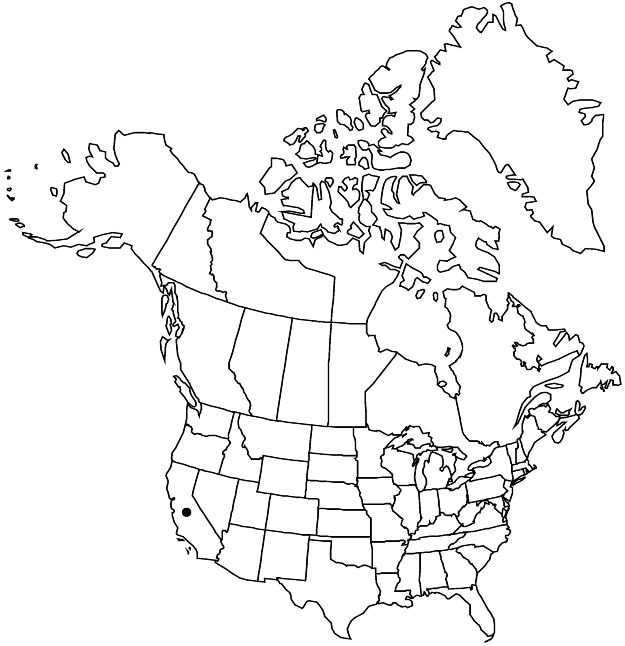Malacothamnus abbottii
Leafl. W. Bot. 6: 129. 1951.
Shrubs, to 1.5 m, branches slender, flexuous, indument complex: white, dense, sublepidote, hairs simple, fine, not shaggy, or stellate, sessile, many-armed. Leaf-blades ovate, unlobed or 3-lobed, 3–6.5 cm, thin, surfaces: copiously white-stellate, basal sinus open, not overlapping. Inflorescences open-paniculate, flowers solitary or in pedunculate clusters, loose, not subtended by conspicuous bracts, flowers 3 or 4 per node; involucellar bractlets lanceolate, 5–8 × 1–1.5 mm, 1/2–3/4 calyx length. Flowers: calyx slightly winged in bud, 9–11 mm, lobes ovate-acuminate, 6–7.5 × 2.5–3.5 mm, ca. 2 times as long as wide, 2–3 times tube length, apex acuminate, densely stellate; petals pale-pink, 1.5–2 cm. Mericarps to 3 mm.
Phenology: Flowering Oct.
Habitat: Stream banks, open chaparral
Elevation: 100–500 m
Discussion
Of conservation concern.
Malacothamnus abbottii was once considered to be extinct. It is known from three localities in southern Monterey County.
Selected References
None.
Lower Taxa
"fine" is not a number.
